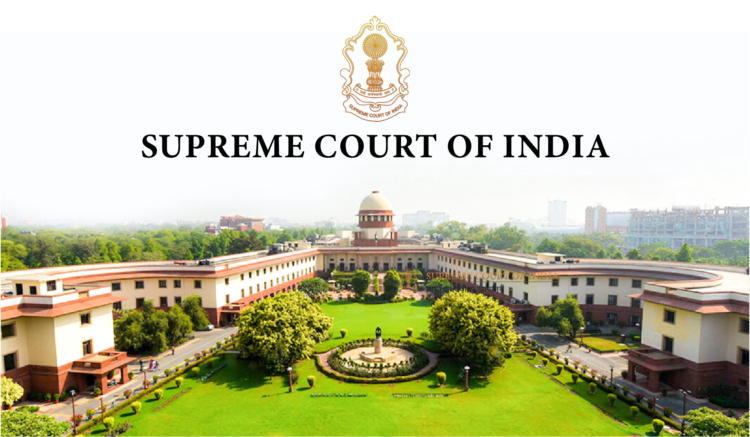By Bobby Chacko-
The latest Supreme Court Ruling banning further restrictions on freedom of speech in the Indian Constitution marks a moment of major progress for the country, but will pose challenges on the highly diversified religious and cultural population of India which has been used to a very litigious environment for many decades.
Indians have for a long time adopted the view that protecting religious and cultural sentiments is necessary to prevent that incitement and public disorder. Indians feel so strongly about everything meaningful to them, right from religion to politics and education, all placed at various levels of the heirachical order.
India’s approach to free speech has always been reflective of the type of society the country is, revealing its deeper sensitivities across a wide spectrum of areas.
Insulting language, especially directed to people on differential grounds of religious beliefs or based on serious derogatory comments has landed people in court on many occasions in the past. The reasoning of the courts has been to achieve harmony as much as possible, and avoid serious tension which in a country like India can easily lead to death.
India has come a long way in appreciating that free speech is a right all human beings are entitled to, and which should not have legal consequences except if it involves a real prospect of incitement.
The Indian Parliament’s goal in trying to preserve a harmonious environment for people of different beliefs to live together has not been as unreasonable as it may first seem. Peace and harmony are desirable goals, but so is disagreement and tension.
”If someone insults people who lack a limb or a sense organ or are sick, whether truthfully or untruthfully, or with phony praise, he should be fined thirteen and a half paṇas [ancient currency]. When a man abuses someone, saying: ‘You are a mother-fucker or a sister-fucker!’ the king should make him pay a fine of twenty-five.
In the 19th century, after the British consolidated their rule over the subcontinent, they enacted the Indian Penal Code (IPC) of 1860, which was designed to incorporate e elements of Hindu and Islamic law and establish some sort of level playing field that ensure mutual respect for the different.
The hundreds of cases litigated since 2010 against individuals for engaging in sedition online were filed by private persons unhappy with social media posts unfavourable to them online. Law suits of this kind would be unimaginable in the western world where offending someone on social media is a matter for the courts.
Indians generally consider the state justified in restricting speech and expression when it is necessary because of the many tense and sensitive issues in India. India’s first prime minister, Jawaharlal Nehru, concluded that irresponsible speech did not deserve freedom of the press protections.
The Supreme Court ruling removing restrictions from freedom of speech is a far cry from Article 19 of the Indian constitution which protected the security of th courts.
Indian courts began ruling parts of the IPC unconstitutional: in Tara Singh Gopi Chand vs The State (November 28, 1950), the Punjab High Court declared that Section 124A (sedition) “has become void as contravening the right of freedom of speech and expression guaranteed by Article 19 of the constitution.”
The Indian government’s introduction of the first amendment to the Indian Constitution in 1951, now found in Article 19(2), which imposes “reasonable restrictions on the exercise of the right [to free expression]…in the interests of the sovereignty and integrity of India, the security of the State, friendly relations with foreign States, public order, decency or morality, or in relation to contempt of court, defamation or incitement to an offence.”
Limits on freedom of speech in relation to defamation has always been understandable, but not in terms of friendly relations with foreign states.
Free speech likely to lead to public disorder has historically been restricted in Indian law for the sake of peace.
In a 1957 case between Ramji Lal Modi vs State of UP (1957), a court argued that censoring a cow-protection publication run by Hindus that allegedly incited Muslims was justified under Section 295A because “the calculated tendency of this aggravated form of insult is clearly to disrupt the public order.”
The law upholding hate speech was upheld and further qualified in Superintendent, Central Prison vs Ram Manohar Lohia (1960) which argued that if the “restriction [to speech] has no proximate relationship to the achievement of public order, it cannot be said that the restriction is a reasonable restriction.”
Another case, relating to Section 124A (sedition), Kedar Nath Singh vs State Of Bihar (1962), ruled in favour of restrictions on the freedom of speech because it fell within the scope of public order.
The Sun Newspaper in the Uk would have run into legal trouble when one of its columnists(Jeremy Clarkson) published an article waiting for the day the wife of Prince Harry will be paraded in the streets naked with people shouting ‘shame on you’.
An article like that would in past times have seen the paper’s editor in the courts if such words had been published had in India, but all that came of it was uproar and criticism. Its a new India now where free speech is allowed without legal challenge.
The new Supreme Court ruling will now wait to see how it fares once those very considerations arise that can affect public order since no qualifications have been placed on them.
The hope is that it doesn’t lead to more cases of public disorder that force the courts to reconsider the law.

